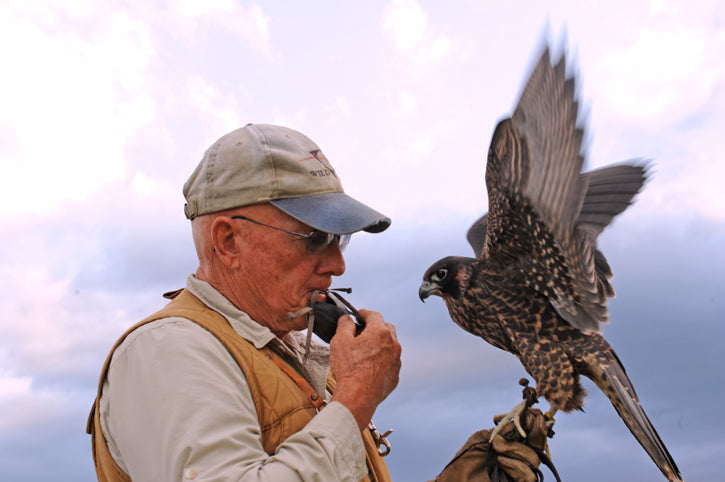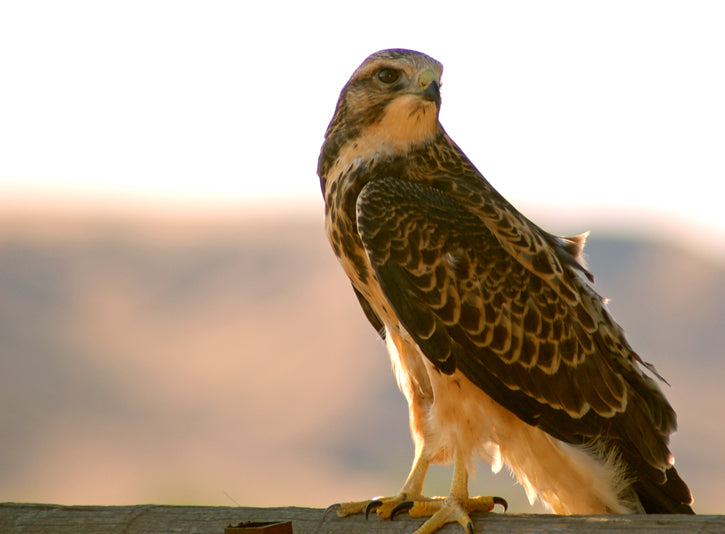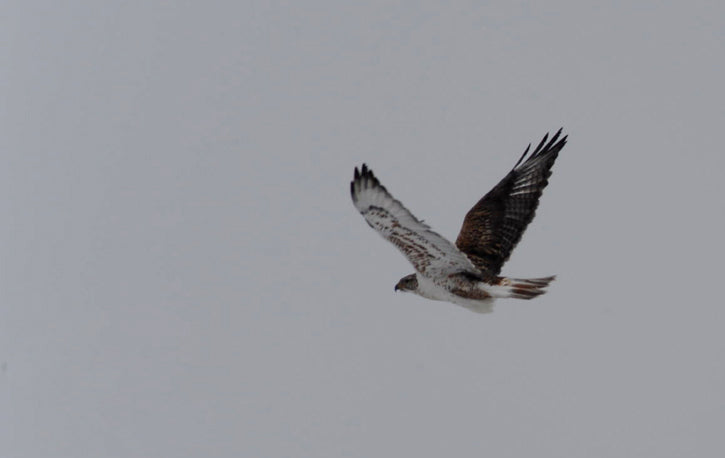This essay appeared in Patagonia’s catalogue focused on falconry. It is reprinted with permission from Patagonia, Inc. Photos by Jill O'Brien
For fifty years my days and dreams have been haunted by falcons, eagles, and hawks. I have been fortunate enough to live close to them. I know the strength of their talons and have felt their surprising weight on my fist. I’ve studied the perfect intricacies of their feathers and smelled their sweet, clean breath.

But anyone who has spent much time out-of-doors knows them too; a dark streak across your path, a spot circling high in a limitless sky, a rush of wings behind an accidentally flushed duck. If you are lucky, you have experienced a frozen instant through a car window, when your eyes meet a cold stare from a fence post. In that breathless flash it is sometimes difficult to tell if the eyes are ferruginous, goshawk, or merlin. There is no recollection of color pattern or body shape. The guidebooks fail us, but we know it was a bird of prey. We can feel it.

Of course we are connected to everything. But with the birds of prey, our connection is uniquely one of envy. Of the great triumvirate of human allies – dogs, horses, and birds of prey – only the birds of prey have remained rooted in the natural world. Our relationship to these three species was originally based in hunting for human survival. These are the species with whom we became partners and the holdover from those ancient days is that dogs are valued for their loyalty, horses for their strength, and birds of prey for their ability to inspire us with a wildness that we have forsaken. While mankind has moved away from their environment, birds of prey have remained part of it.

It is not happenstance that the symbol of many civilizations is a falcon, eagle, or hawk. Their images are cast into coins, shields, sculptures, and elegant jewelry. In his book, “Birds over America”, Rodger Tory Peterson put our relationship with the peregrine falcon into provocative terms. “Man has emerged from the shadows of antiquity with a Peregrine on his wrist. Its dispassionate brown eyes, more than those of any other bird, have been witness to the struggle for civilization, from the squalid tents on the steppes of Asia thousands of year ago, to the marble halls of European kings in the seventeenth century.”
The eyes that Peterson wrote about in 1948 continue to witness our struggle for civilization. While they still observe conquest, invention, and human exertion toward truth and beauty, they have taken on an additional role. In these days of the great environmental crisis, birds of prey have become our conscience and our guides. They choose not to not live in crowded, polluted places. They thrive on pristine landscapes and lead us to what is right and good about the world we are threatening to destroy.
I am forever amazed at the number of environmentally conscious people who were led to their realization of our place on Earth by birds of prey. From childhood I have spent many days at the top of cliffs waiting for a tiny glimpse of a golden eagle or a prairie falcon. I’ve walked endless white-sand beaches and New England woodlots. I’ve cruised the Great Plain in winter, hoping to see gyrfalcons or rough-legged hawks. There have been many companions who have blossomed into scientists, philosophers, visionaries, and eco leaders. Over the years our conversations have been far ranging but, when we found the bird of prey that we were looking for, words always failed us. A thousand times I have been struck speechless to observe a feat of aerobatics, a gesture of dignity, or a sense of nobility beyond the power of man.

Birds of prey are confident and at ease where the Earth is still wild. Follow them into their world. Notice them. Study them. They will call you back to who you really are and bring you to the quiet, beautiful corners of Earth. They will remind you why those corners matter.

17 comments
Words and pictures a wonderful combination in here, Dan. Thank you.
Thank you for a wonderful piece. Rites of Autumn was the first falconry related book I read when I wanted to start the sport. now, 10 years later the passion is still burning strong